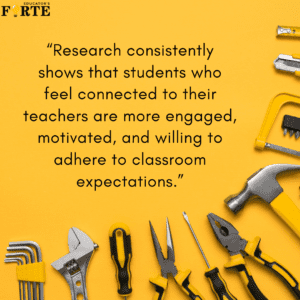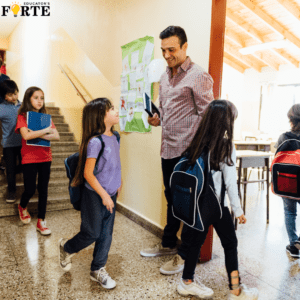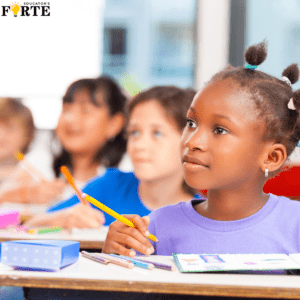Classroom and behavior management have always been critical components of effective teaching. While numerous strategies and techniques can be utilized to maintain a well-managed classroom, one tool stands out as the most powerful: relationships. Building strong, positive relationships with students is not only fundamental to creating a supportive and conducive learning environment but also essential for effective classroom management.

Understanding the Importance of Relationships
Research consistently shows that students who feel connected to their teachers are more engaged, motivated, and willing to adhere to classroom expectations. According to the American Psychological Association, positive teacher-student relationships are associated with higher levels of academic achievement and better behavior in the classroom. When students know that their teachers care about them as individuals, they are more likely to engage in positive behavior and make an effort to succeed academically.
One of the key reasons relationships are so powerful in classroom management is that they help to create a sense of trust and respect. Students are more likely to follow rules and meet expectations when they feel respected and valued by their teacher. This mutual respect fosters a positive classroom climate where students feel safe to take risks, make mistakes, and learn from them. Teachers become their ally, and this is crucial for students from marginalized communities.

Strategies for Building Positive Relationships
Building strong relationships with students requires intentional effort and consistency. Here are some strategies that can help teachers establish and maintain positive connections with their students:
- Get to Know Your Students: Take the time to learn about your students’ interests, backgrounds, and experiences. This can be done through informal conversations, interest surveys, or classroom activities that allow students to share about themselves. Showing genuine interest in your students’ lives outside of the classroom helps build a personal connection.
- Create a Welcoming Environment: Ensure that your classroom is a welcoming and inclusive space for all students. Greet students at the door, use positive language, and display student work. A positive classroom environment sets the tone for positive interactions.
- Be Consistent and Fair: Consistency in enforcing rules and expectations is crucial. Students need to know that they will be treated fairly and that the same rules apply to everyone. This consistency builds trust and helps prevent misunderstandings or feelings of favoritism.
- Show Empathy and Understanding: When students face challenges or make mistakes, approach them with empathy and understanding. Listen to their perspectives and offer support rather than immediate punishment. This approach helps students feel understood and valued, even when they struggle.
- Provide Positive Feedback: Regularly acknowledge and celebrate students’ efforts and achievements. Positive reinforcement not only boosts students’ self-esteem but also reinforces the behaviors you want to see in the classroom.
- Build a Community: Foster a sense of community within the classroom by encouraging collaboration and teamwork. Group activities, peer support systems, and class meetings can help students build positive relationships with each other, creating a supportive classroom culture.
The Impact of Strong Relationships on Classroom Management
When teachers prioritize building strong relationships with their students, the impact on classroom management is profound. Students who feel connected to their teacher are more likely to exhibit positive behavior, engage in learning, and contribute to a positive classroom environment. These students are also more likely to seek help when needed and take ownership of their learning.
Furthermore, strong relationships can help prevent and address behavior issues more effectively. When a teacher has a positive relationship with a student, they are better equipped to understand the underlying causes of misbehavior and address them in a supportive manner. Instead of resorting to punitive measures, teachers can work with students to find solutions and make positive changes.

As teachers strive to implement effective classroom management, relationships are the most powerful tool they can wield. By building strong, positive connections with their students, teachers create a foundation of trust, respect, and understanding that fosters a supportive and well-managed classroom. As educators, investing time and effort into building relationships with students is not only beneficial for classroom management but also essential for creating a positive and engaging learning environment where all students can thrive.

